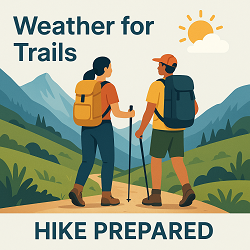Omak, WA Weather Forecast and Current Conditions
Current Conditions From Nearby Local Station

Feels Like 39°F
at
Point Forecast at a Glance







7-Day Temperature Trend
Week Ahead Summary
High temperatures remain relatively stable through the week, ranging from 46°F to 50°F. Some precipitation possible, including both rain and snow.
Climate Context
This week's forecast shows temperatures running 5°F above the historical average for November. Normal highs for this period are around 43°F with lows around 28°F.
This Date in Weather History
1957 - A tornado, 100 yards in width, travelled a nearly straight as an arrow 27-mile path from near Rosa AL to near Albertville AL, killing three persons. A home in the Susan Moore community in Blount County was picked up and dropped 500 feet away killing one person.
Omak, WA 7 Day Weather Forecast Details
Tuesday Nov 18

Day: Patchy fog before 8am. Otherwise, mostly cloudy, with a high near 49. Southeast wind around 6 mph becoming calm in the afternoon.

Night: Cloudy during the early evening, then gradual clearing, with a low around 31. Calm wind.
Wednesday Nov 19

Day: Patchy freezing fog between 7am and 8am. Mostly sunny, with a high near 47. Light north wind.

Night: Mostly cloudy, with a low around 33. Calm wind.
Thursday Nov 20

Day: Partly sunny, with a high near 50. Light and variable wind.

Night: Partly cloudy, with a low around 31.
Friday Nov 21

Day: Partly sunny, with a high near 47.

Night: Mostly cloudy, with a low around 33.
Saturday Nov 22

Day: A 20 percent chance of rain. Mostly cloudy, with a high near 47.

Night: A 20 percent chance of rain before 10pm. Mostly cloudy, with a low around 33.
Sunday Nov 23

Day: Mostly cloudy, with a high near 47.

Night: A 20 percent chance of rain. Mostly cloudy, with a low around 32.
Monday Nov 24

Day: A 30 percent chance of rain. Snow level 3200 feet. Partly sunny, with a high near 46.
About Omak, WA
Content from Wikipedia, licensed under CC BY-SA 3.0.
How We Provide Better Local Weather
Current conditions: We use the nearest available station to your location - including professional MESONET/MADIS and local weather stations - often miles closer than regional airports.
Forecasts: National Weather Service point forecasts predict for your specific area, not broad regional zones, making them far more relevant to your location.



